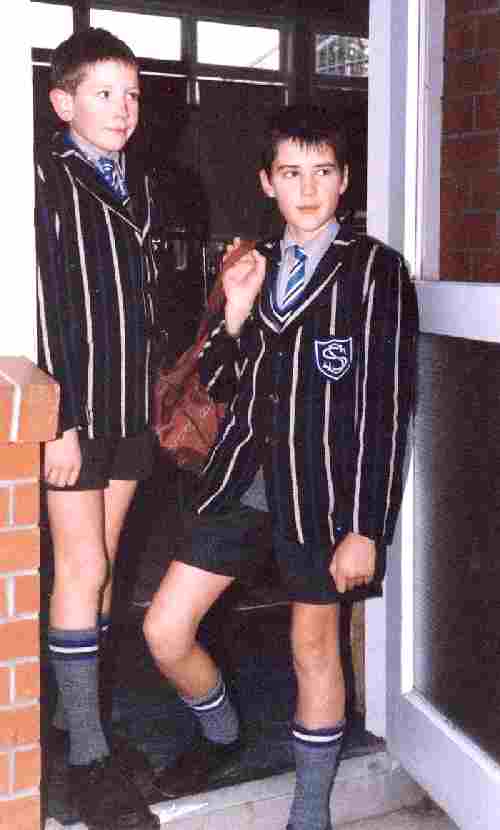
Figure 1.--These New Zealand boys wear grey knee socks with blue, black, and white bands, repeating the color combination from their stripped blazers. |

|
The most common style of school knee socks were grey with colored bands in the school colors incorporated at the top of the sock. The colors might be repeated with the cap, blazer, and tie. The colors ranged from two single colored bands to three different colors. Single coiloeed bands were not common. There was quite a large number of different combinations both in the width, number of colors and especially the color combinations. English schools almost always used a basic grey sock for the boys and somertines for the girls. Australian and New Zealand schools also mostly used a basic grey sock, however, occasionally used a dark blue or black knee sock--only occasionally with colored bands. Many South African schools used khaki knee socks, never with colored bands. These colored bands made school socks more expensive than plain grey socks because they were usually done in relativeky small numbers for individual schools, often fairly small schools. Therre were a few color combinstions that were worn at more thasn one school. Mny Anglicam schools used the same blue color for cos nd blazers. The most common style of school knee socks were grey with colored bands in the school colors incorporated in the turn over top cuff. The colors ranged from two single colored stripes to three different colored stripes. There was quite a different number of different combinations both in the width, number of colors and especially the color combinations. English schools usually used a basic grey sock for the boys. Australian and New Zealand schools also mostly used a basic grey sock, however, occasioinally used a dark blue or black kneesock--aometimes with colored bandss.
HBC is nor sure when these top banded knee socks first appeared. Shorts and knee socks were not commonly worn at British schools until the 1920s so that was when the top bands probably also appeared.
The top-band knee socks came in many combinations od sock colors, band colors and band with.
The most common style of school top band knee socks were grey in England. This was the case in most other former English colonies. English schools always used a basic grey sock. This basically completed the school short trousers which were also grey. Australian and New Zealand schools also mostly used a basic grey sock, however, occasioinally used a dark blue or black kneesock as several schools have blue shorts. Some of the blue or black knee socks are also occasionally worn with colored bands. Some South African schols had khaki socks a few of which had colored bands.
The top stripes were were in the school colors and incorporated at the top of the sock. The colors ranged from two single colored stripes to three different colored bands. Some schools used only one color, in some repeated twice. There were a large number of different color combinations. Often the more complicated combinations werecused when the school had a stripped blazer.
There was quite a different number of different combinations both in the width, number of bands. Usually the bands were of idential width, but sometimes narrow bands were mixed in with the wide bands.
The colors of the top band on school knee socks generally reflected the school colors. This was normally the case of most private schools. Some state schools, mostly secondary schools where the younger boys until the 1970s commonly wore shorts, also had knee socks with colored bands in the school colors. This was especially true of Grammar Schools. This was not the case at most primary schools, few of which had uniforms until the 1960s. Several retailers would offered knee socks with top color bands which mums sometimes purchased, in some cases liking the look of private schools or grammar schools. Marks and Spensers, for example, offered grey knee socks with black stripes nation wide. Mums often purchased them for school and Cubs.
These top banded socks originated in England and seem to have been only worn at schools in British and former British colonies A few exclusive American schools following the British model also had them. HBC has not noted this style in European schools, in part because so few Eurpean schools had uniforms.
Related Chronolgy Pages in the Boys' Historical Web Site
[Main Chronology Page]
[The 1900s]
[The 1910s]
[The 1920s]
[The 1930s]
[The 1940s]
[The 1950s]
[The 1960s]
[The 1970s]
[The 1980s]
[The 1990s]
[The 2000s]
Navigate the Relate Boys Historical Clothing Uniform Garment Pages
[Main garment page]
[Blazers]
[Bookbag]
[Caps]
[Coats]
[Hose]
[Kilts]
[Pants]
[Shirts]
[Shoes]
[Smocks
[Suits]
[Seaters]
[Ties]
